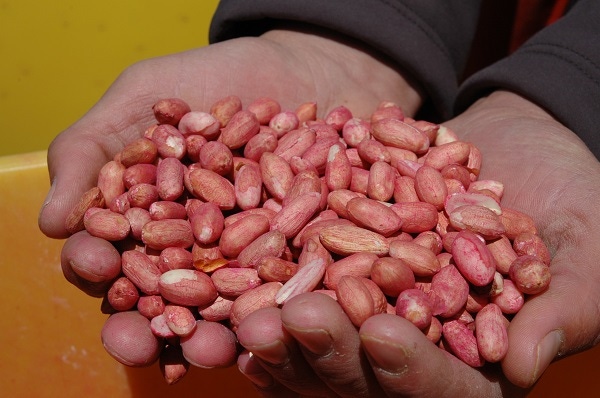
Every time he talks about weed control in peanuts, Todd Baughman makes this point: Develop a system and stick to it.
“The day you plant peanuts you have the highest yield potential you’ll have all season,” says the Oklahoma State University Extension agronomist at Ardmore. “Every time you miss a spray application or other practice after planting, you lose yield.”
Speaking at the recent Oklahoma Peanut Expo in Altus, Baughman encouraged producers to develop a season-long program — including herbicide-resistant species and “just tough- to-control” weeds.
“Not all control issues are resistant weeds,” he says. “Russian thistle, purple nutsedge, Texas panicum, and a few others are just hard to manage. But we have a lot of products available, so use them when and where they fit best.”
PEANUT WEED CONTROL CHECKLIST
Baughman offers a checklist of sorts for peanut farmers to follow to keep weeds in check.
Start clean — “If you get behind early, you will probably never catch up with the tools we have available.” Early control could begin with a fallow field treatment. “A lot of weeds will germinate in the fall, so develop a fallow herbicide program based on weed populations.”
Know your weeds — “Weed identification is a key to herbicide choice and application timing,” Baughman says. Pigweed presents several problems, including potential herbicide resistance. But it may also grow so fast a producer misses ideal application opportunities. “A 2-inch pigweed is a good target,” he says, “but they will grow rapidly.”
Knowing where other tough-to-control weeds are located also helps producers develop an effective herbicide program.
Use the yellow — “Start with a yellow herbicide,” Baughman recommends. “It’s one of the most economical tools available, especially with herbicide-resistant pigweed. It’s better to have the pre-plant incorporated herbicide and not need it than to need it and not have it. If you start with a yellow herbicide, the rest of the program works better.”
Activate — Yellow herbicides must be incorporated into the soil with rainfall, irrigation, or cultivation. “Make certain to get enough irrigation or rainfall, at least a half-inch, on the herbicide to activate it,” he says.
Follow up — “Follow the yellow herbicide with a good pre-emergence product.” Baughman says Dual Magnum, Valor, Outlook, and Warrant are good options, and that a pre- application should be part of the “systems approach” to weed control.
Stay on time — “Timely applications are crucial in an integrated herbicide program,” he says. “Target small weeds to get in front of problems. Weed size, farm size, and weather all present challenges to proper timing. Schedule herbicide applications so you get all weeds by the time they reach 4 inches tall. Don’t be behind by the time you get to the last field.”
Timing also includes how to proceed from field to field, Baughman says. “Spray the worst field last to prevent moving weed seed to other fields.”
Don’t stop at the field edge — Thorough weed management should include turnrows, ditches, fences, and borders, he says. “Also, rogue fields that are heavily infested, especially if you suspect resistant weeds. Get the weed out of the field and don’t allow it to seed a new crop for next year.”
Prevention — Planting only good quality, certified seed, and raising a healthy crop are key elements to managing weeds. “Also, rotation is an essential practice for growing peanuts. Rotation improves yield potential, decreases disease pressure, and benefits from the other herbicides used on rotation crops.”
Avoid mistakes — The biggest mistake, Baughman says, is not starting clean. Eliminating residual herbicides from the weed control program is another bad idea. Failure to activate yellow herbicides correctly will cause trouble, and applying post-emergence applications too late results in unsatisfactory weed control.
Choosing the wrong herbicide — “With new products available, or when using one you’re not used to, tank mix compatibility could be an issue. You could see some clogging, so make certain the products are compatible.
“Also, realize that no miracle products exist. Make certain herbicide decisions are based on sound science, and not misleading data.”
For the latest on southwest agriculture, please check out Southwest Farm Press Daily and receive the latest news right to your inbox.
Weed infestations can create significant problems for peanut producers by limiting yield and creating serious harvest problems in the fall, Baughman says. But following a systems approach that includes starting clean, applying herbicides on time, targeting small weeds and selecting the right products — including residuals — for the weed population will keep yield potential from serious decline.
About the Author(s)
You May Also Like






